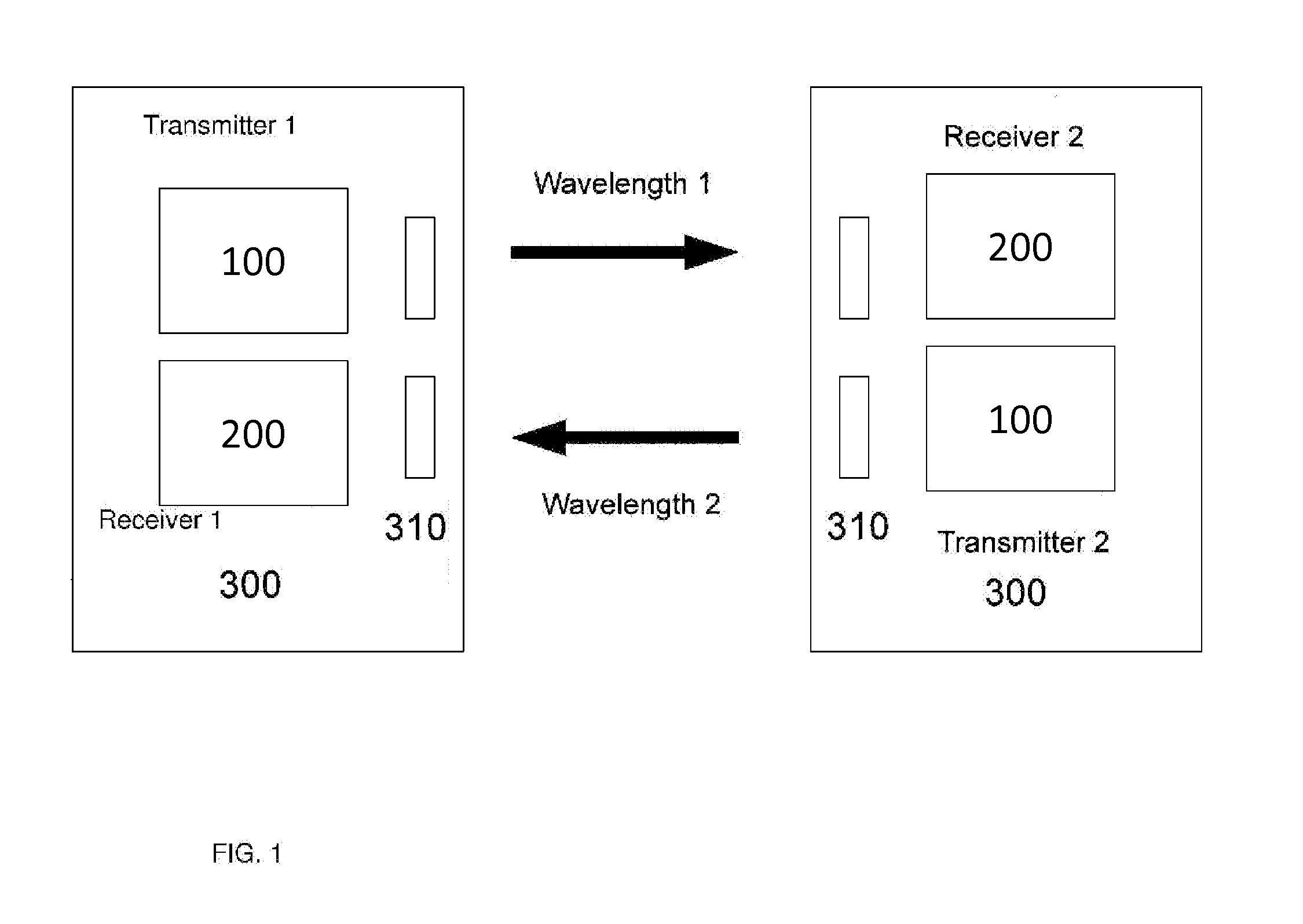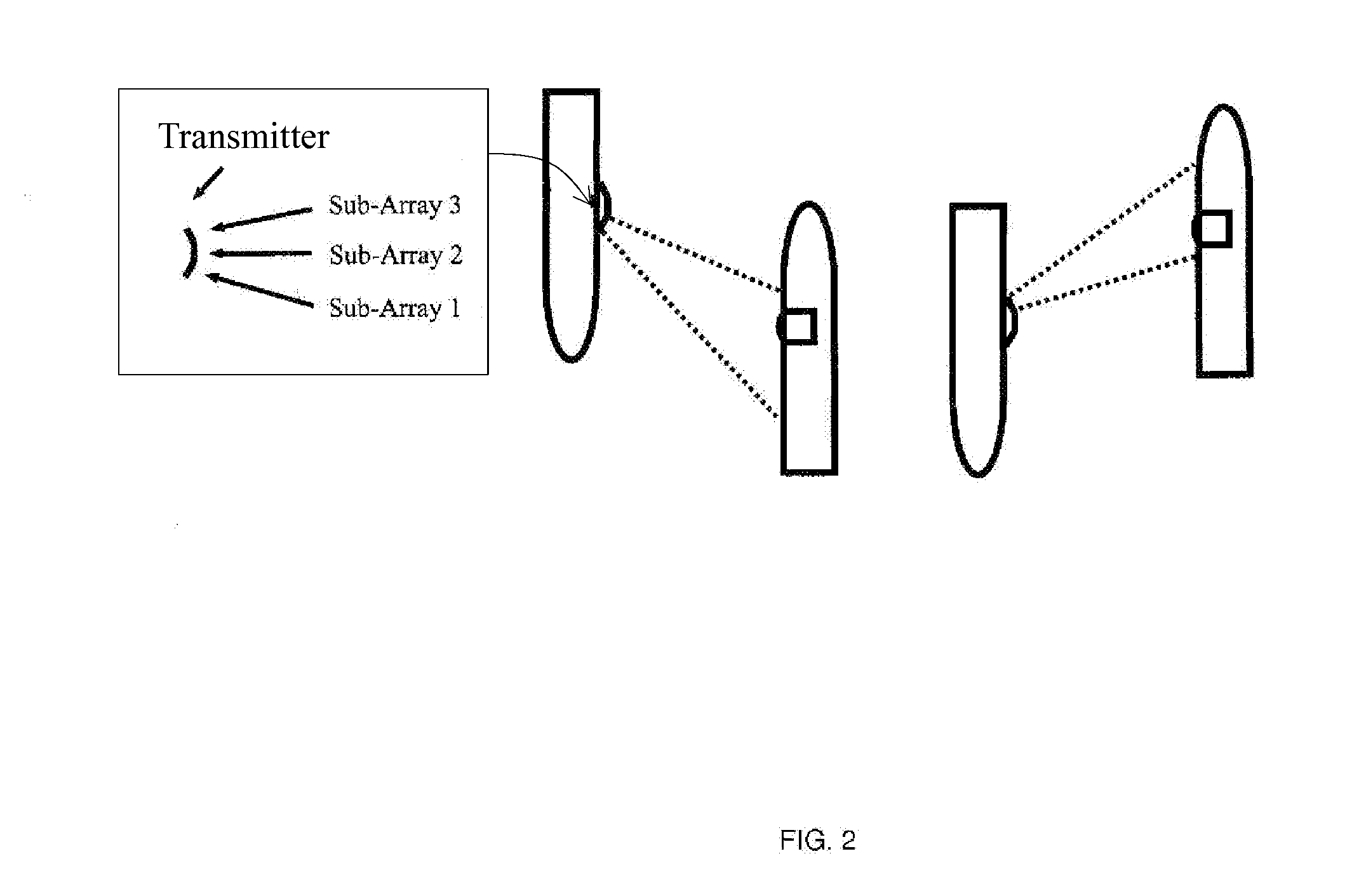High-bandwith underwater data communication system
a data communication system and high-bandwith technology, applied in multi-frequency code systems, line-of-sight transmission, instruments, etc., can solve problems such as inconvenient use, lack of suitable light sources, and inability to implement data transmission between underwater entities using optical means
- Summary
- Abstract
- Description
- Claims
- Application Information
AI Technical Summary
Benefits of technology
Problems solved by technology
Method used
Image
Examples
Embodiment Construction
[0053]Applicants have recognized that optical data transceivers may be provided that operate in an aqueous medium. In some embodiments, the transceivers operate with high data transfer rates, e.g., greater than about 1 megabyte per second (Mbps), about 10 Mbps, about 100 Mbps or more.
[0054]In some embodiments, the devices use light sources, e.g., lasers light sources or light emitting diode (“LED”) sources, with outputs in the blue-green region of the spectrum, e.g., with wavelengths in the range of 400-600 nm or any subrange thereof.
[0055]For example, in some embodiments, solid-state light emitters, e.g., based upon the Indium-Gallium-Nitride (InGaN) semiconductor materials now provide a family of light sources in the blue-green spectral region that are efficient, compact, long-lived, and can be directly modulated (their optical output power controlled by the amount of electrical current flow in the device). Such devices may operate at wavelengths throughout the blue-green region. ...
PUM
 Login to View More
Login to View More Abstract
Description
Claims
Application Information
 Login to View More
Login to View More - R&D
- Intellectual Property
- Life Sciences
- Materials
- Tech Scout
- Unparalleled Data Quality
- Higher Quality Content
- 60% Fewer Hallucinations
Browse by: Latest US Patents, China's latest patents, Technical Efficacy Thesaurus, Application Domain, Technology Topic, Popular Technical Reports.
© 2025 PatSnap. All rights reserved.Legal|Privacy policy|Modern Slavery Act Transparency Statement|Sitemap|About US| Contact US: help@patsnap.com



